How to conduct water into the house from the well
Own plumbing in a country house increases the comfort of living in it. Make it difficult, especially when it was built a long time ago, and the design does not provide for such changes.
In any case, the water supply system from the well can be made by hand, without involving professionals in the work.
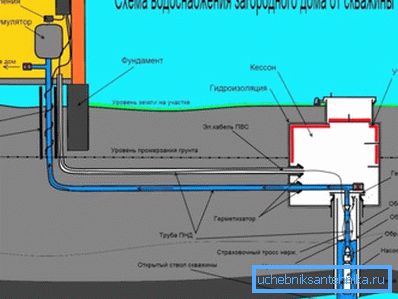
At the first stage it is necessary to obtain useful information:
- what materials and tools to use;
- what kind of water supply system is suitable for a given case;
- what need technical support.
Water supply scheme and installation rules
You need a plan, and it doesn't matter that you only need water for the kitchen. You should paint it in detail and understand how to conduct water into the house from the well step by step, and also what needs to be prepared in advance.
The scheme should contain:
- consumers;
- collectors;
- boiler;
- filters and pumps for the well.
Mark on it the location of these structures and components, indicate the direction of the pipeline through the rooms in the house. Do everything in scale and with genuine dimensions, it will provide an opportunity to speed up and simplify the calculation of the necessary materials.

Pipe laying is done in two ways:
- Consistent, which is well suited for a small country house, where 1-2 people live, as this scheme is low-power. It works like this: water moves along the main pipeline to a residential house, and there is a tee near each mixer or tap, which diverts it to the consumer. Simultaneous use of several water points will reduce the pressure in the pipeline, which may not be suitable for the needs of residents.
- Collector, which works as follows: to each tap from the manifold separately summing water pipes. In this case, the water pressure will actually have significantly lower losses than in the first case, and everywhere it will be equal for each consumer. The price of such a wiring will be more expensive due to the increase in the number of pipes, but it is much more convenient.
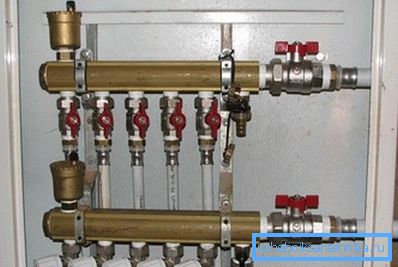
The general scheme of water supply site and home
- Well.
- Pump station or pump. Be sure to use a check valve.
- Hydroaccumulator (expansion tank to automate the process of supplying water to the system). It also allows you to maintain and smoothly change the water pressure in the water supply system.
- Water distribution tee and shut-off valve.
- The system of cleaning and preparation of water from the well, as in any natural source there will always be different types of impurities.
- Tee to separate the supply of cold tap and the preparation of hot water.
Tip: install shut-off valves on each consumer line.
Feed cold water from the collector, and connect hot water to the boiler, heating element, boiler or stove. After that, bring it to the DHW collector, distributing pipes in the rooms.
Water supply from the well
The usual well, as well as artesian, is a source of drinking water. Since it rises from greater depths than at the well, it is cleaner and has a chemically stable composition. In such water, there are usually no harmful compounds and impurities, almost no microorganisms.
For the device wells usually need to create and agree on the project. But this does not interfere with the owners of private houses on the site to conduct autonomous water supply.
Materials
- Copper is considered the best material for the plumbing system, however, it is also the most expensive. Water supply from it:
- does not rust;
- does not respond to ultraviolet and aggressive biological environment; keeps increased pressure;
- not afraid of temperature changes and toxic impurities;
- It has good heat dissipation.

- Metal-plastic is called aluminum pipe, outside and inside covered with polyethylene. Rust does not develop a smooth surface, as well as the accumulation of mineral deposits. Outside from the sun and condensate protects a thick plastic layer. It cannot be used at temperatures above 95 ° C, it bursts when water freezes inside, it cannot be bent at an angle of more than 90 ° C without using fittings.
- Iron pipes are reliable and durable, but without water from the inside they quickly become rusty, as well as outside. Installation is performed by welding or using threaded connections.
- Polypropylene pipes are popular in the construction of plumbing for a private house. They possess excellent operational characteristics, do not oxidize, the term of operation is up to half a century. Installation is easy, connections are reliable, so they can be hidden under the plaster. Disadvantage - a special soldering iron is required for operation.
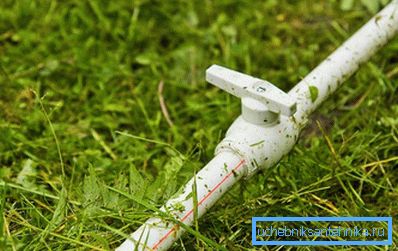
The cost of laying the water supply system will directly depend on the number of pipes for the collector system.
Instruments
For steel and copper plumbing:
- gas and adjustable wrench;
- spanners;
- linen reel;
- adapters, shafts, couplings and plugs of different diameters.
For metal plastics:
- gas and adjustable wrench;
- spanners;
- tape fum;
- fitting.
For polypropylene plumbing - soldering iron with nozzles.
Tip: before deciding how to draw water from a well into a house and what materials to use, read in detail about each material. Most likely, some characteristics will make you think.
Season water supply
Below is a guide that will allow you to get water from the well all year round.
Installation can be made from polypropylene or metal-plastic pipes.
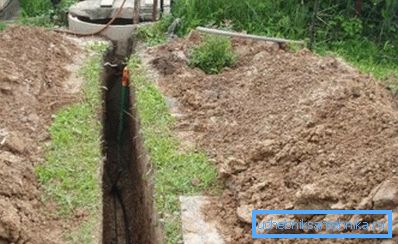
- Find out the level of soil freezing at the site, as the water supply should be placed below it. To not depend on him, do this:
- put a plastic pipe at a depth of 600 mm and fill it with insulation, for example, consisting of foam chips, expanded clay and coal slag to a thickness of 200-300 mm. The main thing is that it almost does not absorb moisture and is durable, so that it can not be compacted by the pressure of the soil.
- Insulate the water supply system with a corrugated plastic casing and special thermal insulation. Such a system makes it possible to use a trench with a depth of only 300 mm. It is cheaper than laying pipes with heating cable.
- Bring the water trench to the house at a right angle so that undermining of the foundation does not shrink it.
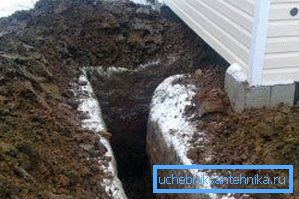
- Connect the pump. To do this, near the well, make a pit with a depth of 1 m and dimensions of 700 mm by 700 mm. Strengthen the walls, laying them with brick or sheathing them with boards, pre-impregnated with an antiseptic. Fill the bottom of the pit with rubble or fill with concrete.
- Lead the water pipe into the pit to which the electrical cable and hose will be mounted. A pit is necessary for convenient and quick disconnection of the pump during repair. Insulate it so that the water in the hose does not freeze in winter.
- Connect the pump using a waterproof socket or pin-tight connector.
- Install the water outlet in an unheated room or outside. This is the most difficult part of the aqueduct, to which they place the highest demands. Not everyone can afford to use the water dispenser, and it is also difficult to adjust to work.
Simple scheme of water supply to the house
We offer a simple but reliable option, how to connect the water supply system from the well to the house and use it all year round. To do this, in the bottom of the pipeline make a small drain hole O 1 mm. When the tap is closed, water slowly flows through it into the pit, without freezing in the pipes in winter.
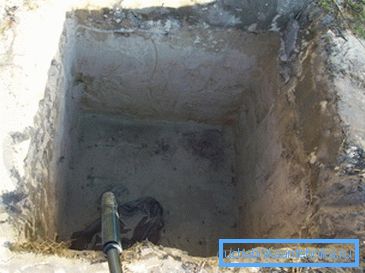
When the faucet is open, it also drips into the pit, soaking into the ground, but because of its small diameter, the entire flow of water actually reaches the collapsible faucet.
The scheme, alas, is not without a couple of drawbacks:
- constant moisture in the pit;
- a small part of the water will be lost.
However, its reliability and ease of manufacture has gained wide popularity among summer residents and gardeners.
Conclusion
The article was about how to conduct water from a well to a house, explaining all sorts of questions about this process. A simple popular and reliable scheme was also proposed that did not require large financial expenditures. In the presented video in this article you will find additional information on this topic.